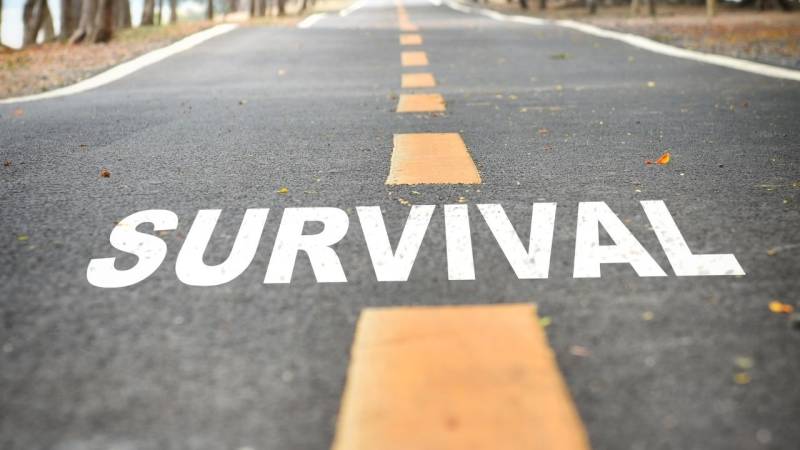
The plan, how to survive three days in the wilderness
👉 The key facts from this guide
- Day 1: Focus on building a shelter and starting a fire. Stay calm and suppress panic.
- Day 2: Use your fire as a signal and build an S.O.S. signal out of logs or stones. Improve your shelter and take care of water supply.
- Day 3: Be patient and stay positive. Concentrate on necessary tasks like collecting firewood and water, reinforcing the shelter, and giving signals.
- If no help has arrived after 72 hours, consider a plan for the next steps. However, stay in your location as much as possible unless you are sure you are beyond the search radius.
- Avoid risks and always inform someone about your plans and expected return time before your journey.
The most basic principles of survival can be broken down into the rule of three: You can survive three minutes without breathing, three hours when exposed to freezing temperatures, and three days without water.
The military emphasizes the same mindset in their survival schools.
The focus has shifted from long-term survival to waiting for help.
This is partly due to the increased efficiency of rescue teams. On the other hand, it is based on the recognition that skills such as setting traps or hunting for food cost valuable energy.
Even navigation skills are downgraded because it is easier for search teams to locate a stationary target.
A 72-hour plan emphasizes the importance of basic skills such as making fire and signaling for help.
As the one who is lost, injured, or distressed, it is your job to stay put and survive.
So quiet the panicked voices in your head, stick to the plan detailed here, and you will likely be found within 72 hours.
Day 1: Build a Shelter
For most people who are lost, Day One begins in the evening. Then it is more difficult to get out of the woods than to get into them.
If you have already been reported missing, a rescue team will search roads and rails with flashlights.
So do not leave your location – especially if you are stranded on a road or other thoroughfare. The assumption is that you will stay within the radius where you got lost.
Even experienced outdoor travelers are not immune to the shock of fear that comes with disorientation.
You must suppress the urge to panic. Maintain inner calm. You can learn how to do this in my guide "How to deal with panic in emergencies".

Lost people progress from confusion to denial. They twist their mental map until it matches visible landmarks or their compass needle.
They continue on until they wake up to the fact that their senses tell them they have gone astray. This is the point where panic sets in.
If you can recognize this sequence, you stand a better chance of suppressing the impulse to take the next potentially deadly steps.
Stop walking and settle down.
If daylight allows, take excursions to find a great spot nearby. But mark a trail for the return.
If you can't find your camp after short walks in different directions, return to the starting point and set up your shelter there. Preferably with a windward shelter.
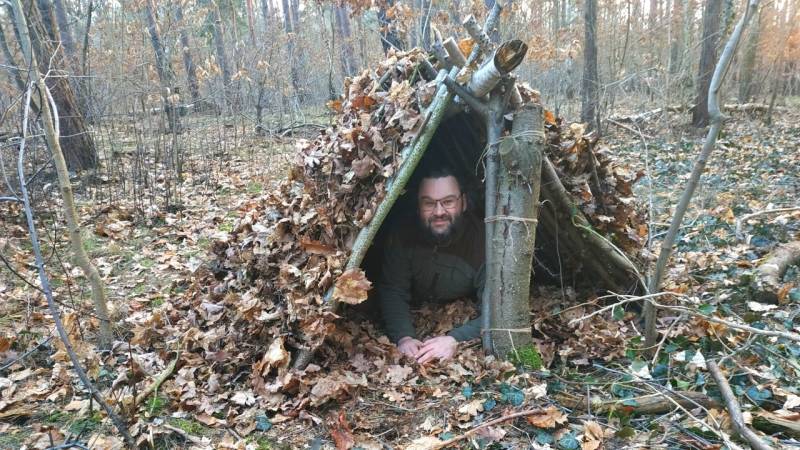
It's brilliant to have a fire starter (see the top list here) in your survival equipment. On the other hand, there are many other ways to start a fire.
Start gathering firewood before it gets dark and build a fire pit. Place yourself and your backpack on a bed of branches and leaves when it's time to rest. This way, you're shielded from the ground.
Accept that it's going to be a long night. Comfort yourself by knowing that you've already come a long way.
Also read:
The Survival Triad Rule – Solid Construction or Not Sensible? – The Triad Rule is a rule of thumb in survival. But is this rule really inflexible when it comes to oxygen, water, food, and shelter?
Day 2: Signal for Help
The purpose of the fire pit changes on the morning of the second day. From now on, it must serve as a signal.
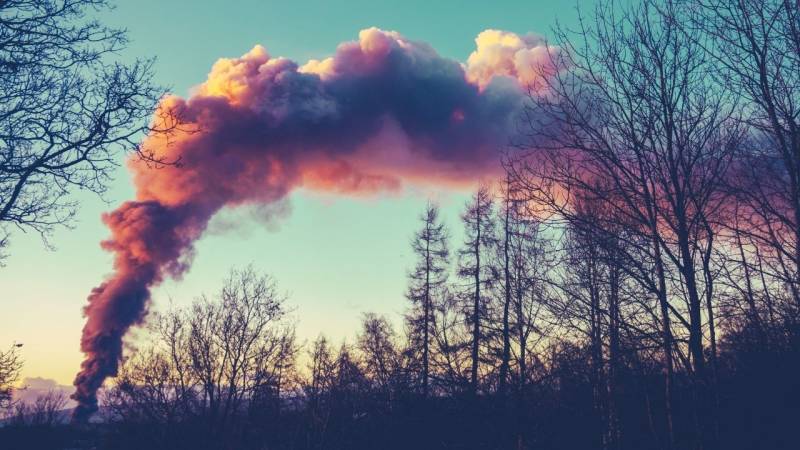
Find a meadow or clearing near your camp and build your signal fire there. Make sure it can be easily seen from an airplane or helicopter. Collect green branches to create a smoke signal.
Task number two is to build an S.O.S. signal out of logs or rocks. Each letter must be at least 3 meters tall.
Remember that the universal distress signal consists of threes: three gunshots, three whistles, or three shouts.
Use your common sense to ration your signal shots, but don't be stingy with the whistle. Practice aiming your signal mirror, so you can be quick to attract rescue planes flying overhead.
Reading tip: 3 signals to attract attention in a survival situation
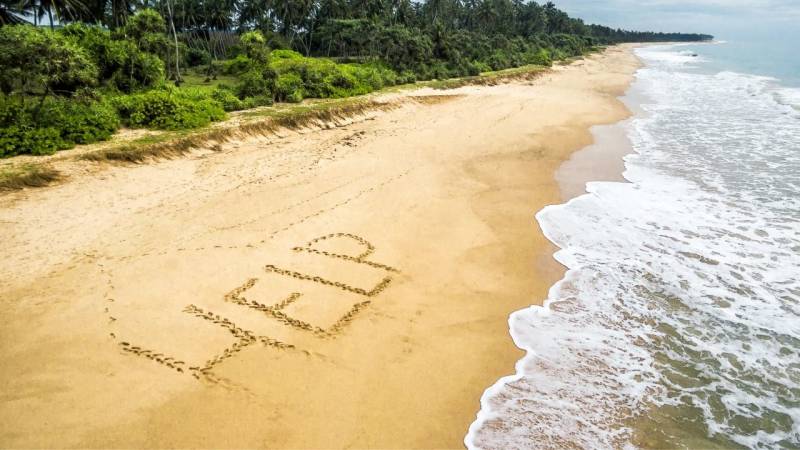
In the afternoon, focus on building a decent shelter. Erect poles between trees and lean branches against one side to construct a frame.
Place smaller branches within the frame. Then make the shelter waterproof by aligning the ends of the branches downwards, allowing the needles and leaves to run into the ground, rather than absorbing rainwater.
If you have a blanket, hang it over the inside of the wall to direct heat from the fire onto your bed.
If you exert a lot of energy, dehydration will be your biggest problem.
Dehydration is one of the deadliest enemies in survival situations, as well as protection from cold and heat.
In winter, you may need to melt snow if you cannot find a river that is not frozen over.
This is a tedious process without a pot, but you can melt a few sips on aluminum foil, in a can, or bottle. If you don't have cleaning tablets or a way to heat water, it will be precarious by the end of the second day.
Reading tip: Read here how to find and make water drinkable.
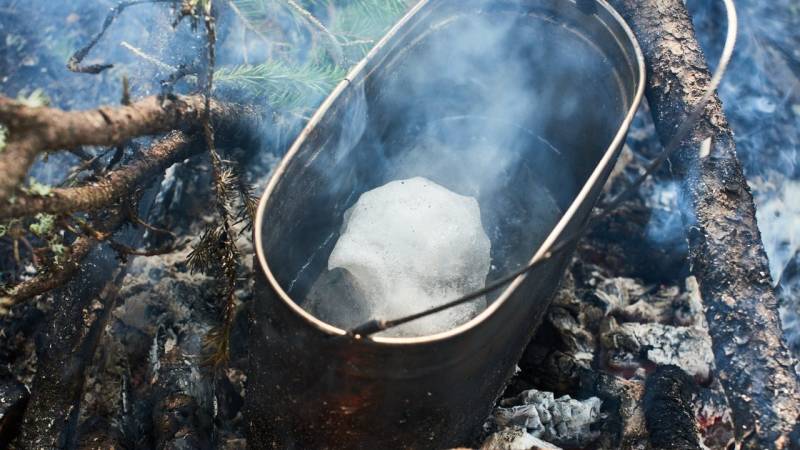
You should be by the fire at night.
If it's any consolation, my experience is that the second night is calmer than the first.
Also Read
The Ultimate Survival List: These 7 things you need on a deserted island - Discover the 7 indispensable pieces of equipment for a deserted island. With our ultimate survival list and tips, you'll be well-equipped.
Day 3: Be patient and stay positive
Now, voices in your head start telling you that no help is coming.
It's easier to say no to these voices when you focus on necessary tasks: collect firewood and water, reinforce the shelter, and give signals.
Survival is about being tough and persevering.
As the day passes, it's easy to lose courage. Be patient. It's okay to think ahead.
Use your brain to come up with a rational plan.
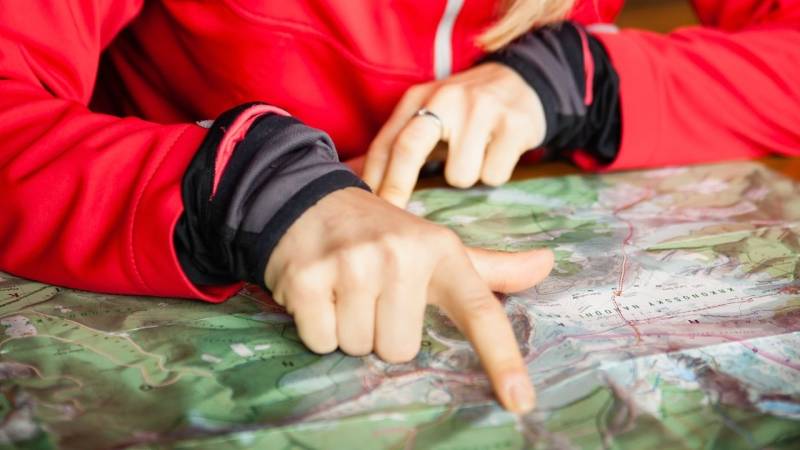
In the case that no help arrives until the next afternoon, look for messages in the sky.
If your camp has been hit by storms, the rescue service may not have seen your signals.
But if the sky was clear, and you still haven't seen or heard any planes, assume you're outside the search radius.
In the first case, it's wise to stay put. Possibly for several days. And hope that the weather changes.
In the latter case, you have to seriously consider relocating your camp before you become too weak.
But leaving the camp and venturing into the unknown is the last option. With few exceptions, staying where you are for at least 72 hours is the best plan.
And one more thing: never take any risks.
So, always let someone know where you're heading and when you plan to be back.


Author of the guide
Martin Gebhardt
Hey, I'm Martin. On my blog, you will learn the basics and numerous details about living in the wild. I think survival, bushcraft and the good life in nature are the keys to happiness. Find me here on Instagram or on YouTube. You can find more about my mission on the About Me page.
Was this guide helpful?
25 people found this guide helpful.
5.00 out of 5 points (25 Ratings)
Comments (0)
This post may contain affiliate links. So if you click on the links and make a purchase, I will receive a small commission at no additional cost to you. Click here, to learn more about it.


